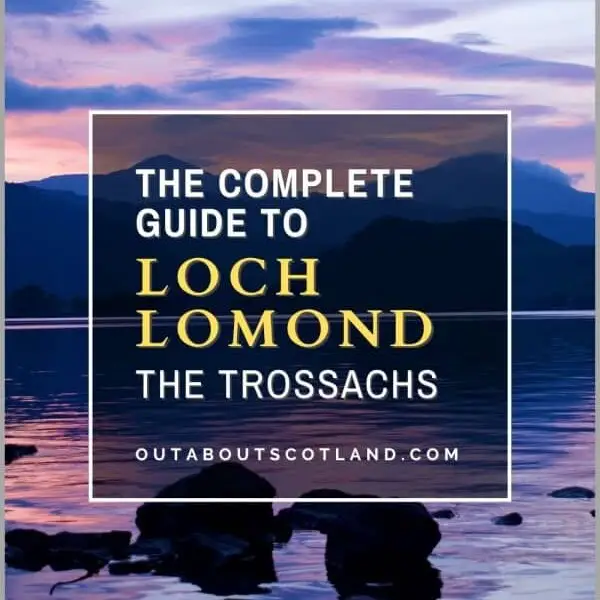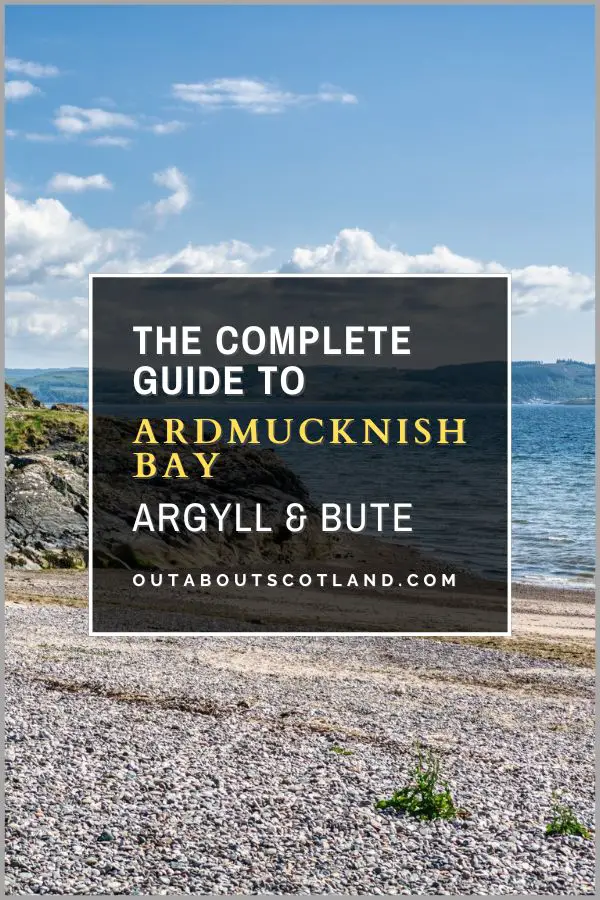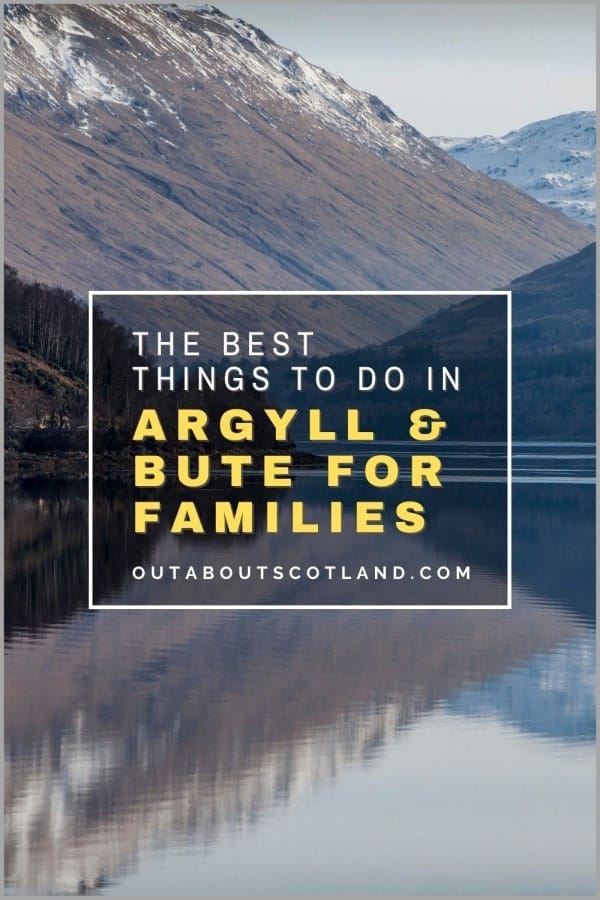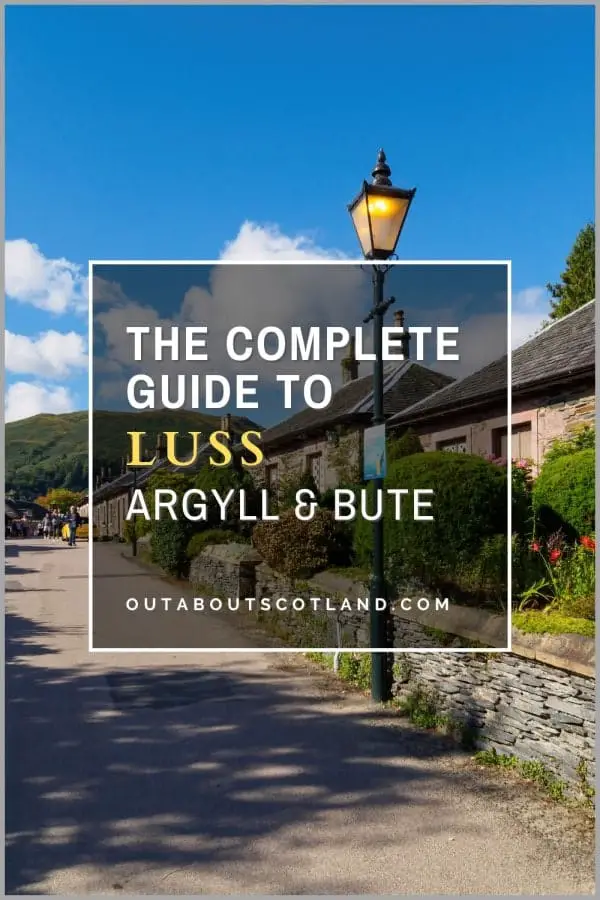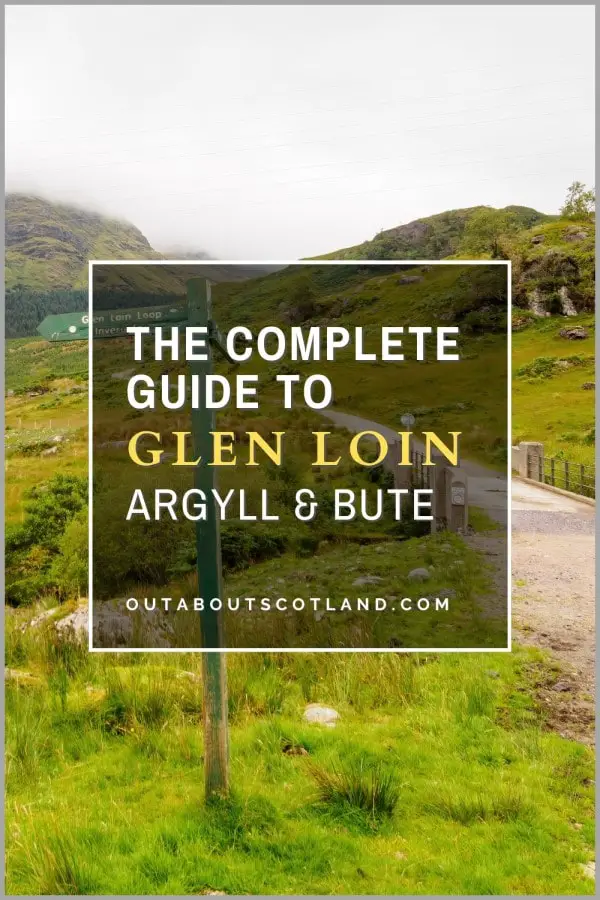With a surface area of 27.5 square miles split between Stirling, Argyll and Bute and West Dunbartonshire, Loch Lomond is Britain’s largest body of freshwater. This enormous loch is located in the stunning Trossachs National Park, where forests, quaint villages, and lofty mountain peaks surround it.
The Loch is one of the most-visited natural attractions in Scotland due to its proximity to Glasgow. It’s also a haven for thrill-seekers looking to take part in water sports as well as nature lovers who visit Loch Lomond to see golden eagles, red squirrels, otters, and other iconic Scottish animals.
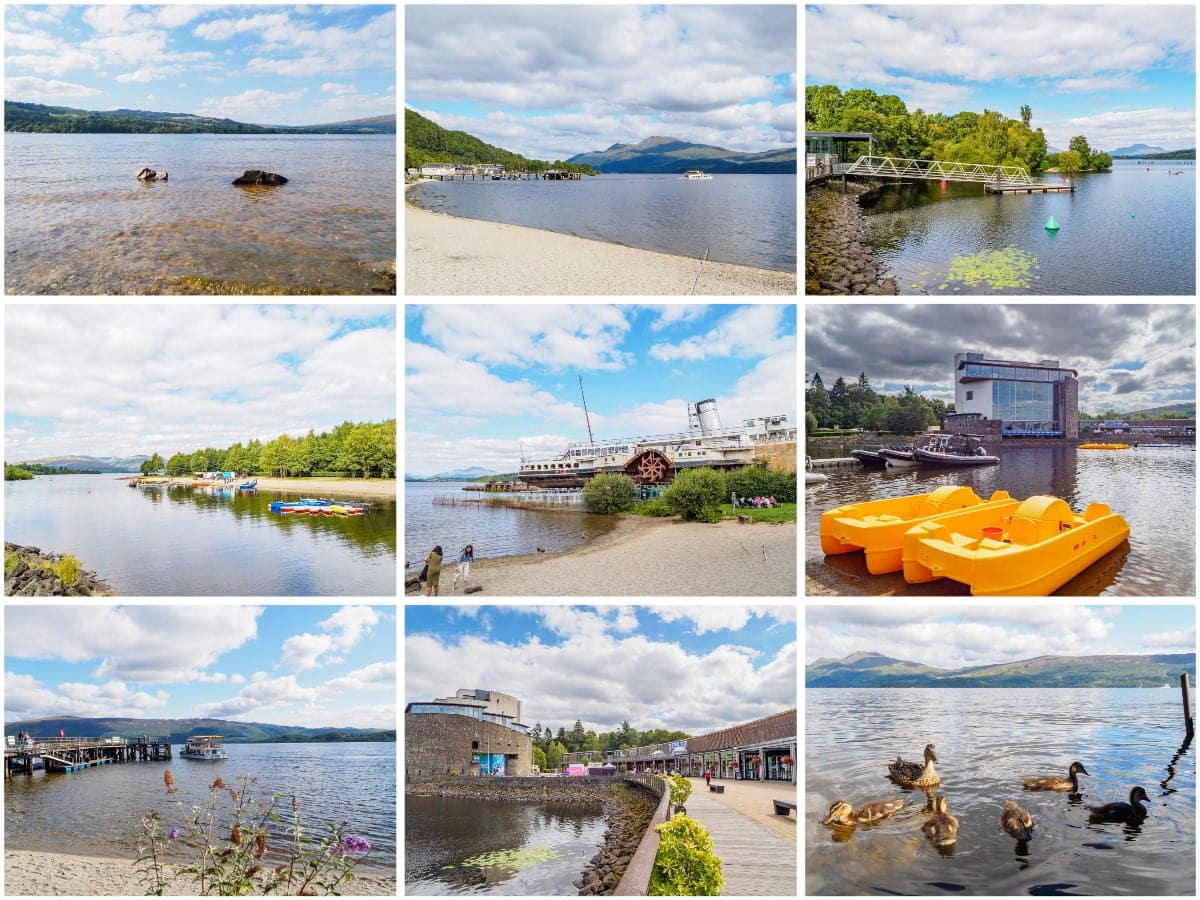
| Address: | Balloch: Alexandria G83 8QP Balmaha: Glasgow G63 0JQ Luss: Alexandria G83 8PA Tarbet: Tarbet G83 7DE |
| Opening Hours: | Loch Lomond is accessible 24/7 365 days a year. |
| Admission Price: | N/A |
| Parking: | There are public car parks at: Inveruglas: Arrochar G83 7DP Tarbet Pier: Arrochar G83 7DG Firkin Point: Arrochar G83 7DL Luss: Alexandria G83 8PA Balloch: Alexandria G83 8QP Balloch Country Park: Balloch G83 8LX Balmaha: Glasgow G63 0JQ Ben Lomond: Glasgow G63 0AR |
| Contact: | N/A |
| Facilities: | Loch Lomond Shores: Disabled access, car park, cafes, public toilets, wheelchair hire, picnic benches, BBQ area, information centre. Balloch Country Park: Car park, toilets, play park, picnic benches. Luss: Car park, cafes, restaurants, shops, public toilets, picnic benches, information centre. Balmaha: Car park, play park, toilets, information centre. |
| Photos: | Virtual Tour |
Overview
Loch Lomond barely needs an introduction. This is one of Scotland’s most famous natural attractions, on a level with Loch Ness and Ben Nevis but surpassing both when it comes to visitor numbers.
Each year more than 4 million people visit Loch Lomond including over 1 million who go to Loch Lomond Shores in Balloch – a number that even beats top attractions like Glasgow’s Kelvingrove Museum and Edinburgh’s Botanic Gardens. So what is it about this particular loch that makes it such a tourist hotspot?
One of the main reasons for its appeal is its location, which allows drivers to reach the southern end in around 30 minutes from Glasgow and just 45 minutes from Stirling making it a great destination for weekend day trips.
It’s also an incredibly attractive place thanks to its position in the Trossachs National Park where the picturesque Conic Hill and the mighty Ben Lomond dominate the eastern side while the equally gorgeous Arrochar Alps and Glen Striddle hills sweep away into the distance to the west.
The loch itself is a truly vast body of water – 23 miles long and 5 miles across at its widest point – with a total surface area of 27.5 square miles which makes it even bigger than Loch Ness, though Ness beats it by volume at 1.77 cubic miles compared to Lomond’s 0.62 cubic miles.
Like many of Scotland’s biggest lochs, Loch Lomond has several islands inside it (over 30), including Inchmurrin (the largest freshwater island in the UK) and Inchailloch, which is part of a national nature reserve, as well as several that are only visible when the water level drops, plus a few man-made cranes that were built in Neolithic times.
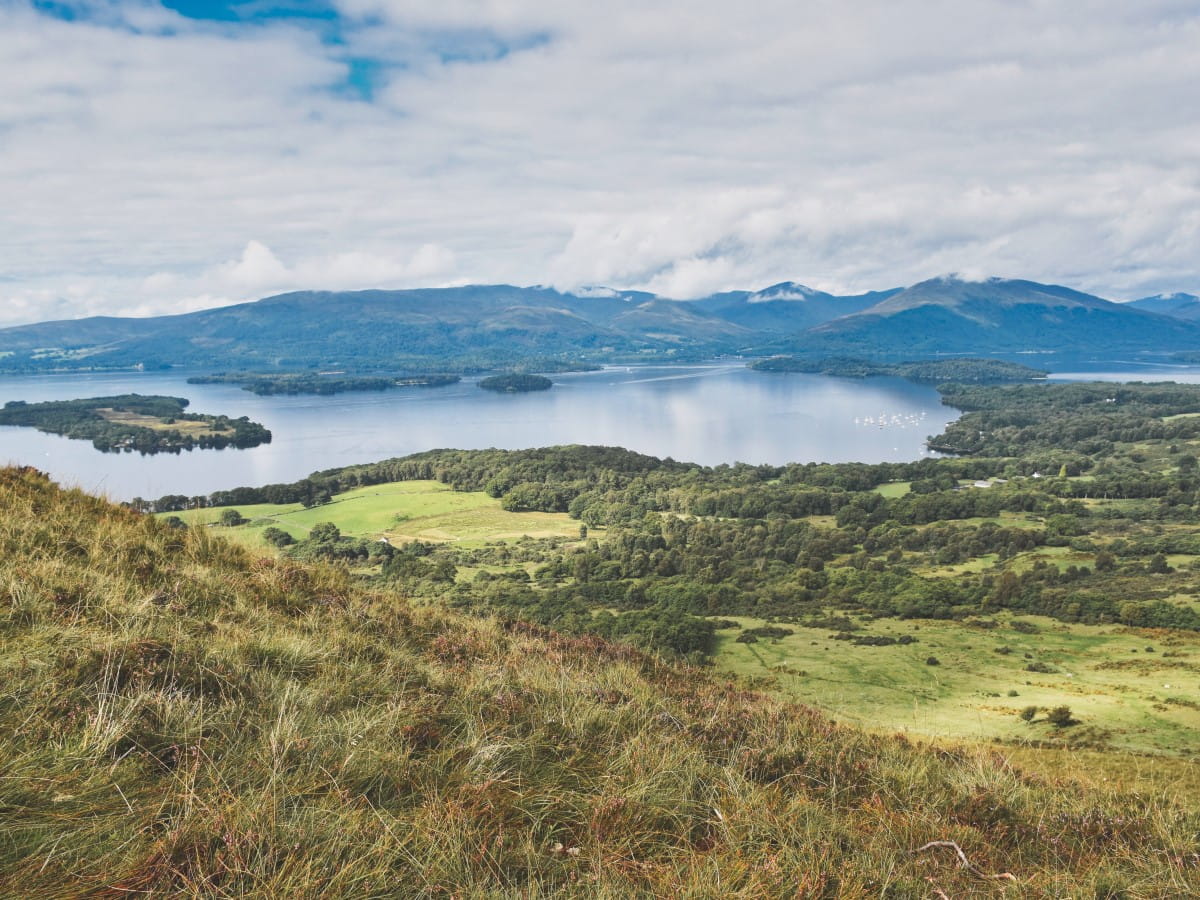
The landscape surrounding the loch is primarily mountainous but towards the south it flattens into rolling fields courtesy of the Highland Boundary Fault which cuts across the country from Helensburgh on the west coast to Stonehaven on the east. This relatively flat southern side is home to Balloch and the previously mentioned Loch Lomond Shores leisure complex, which sits next to the winding River Leven.
A cycleway runs alongside the 6-mile river which ends at the River Clyde at Dumbarton where cyclists can follow a path heading south to Glasgow, making Loch Lomond a great destination for long-distance bike rides to and from Scotland’s largest city.
Those visitors that prefer walking will find superb trails on the east side of Loch Lomond thanks to the West Highland Way which joins the attractive village of Balmaha and continues north to Ardleish, with ample opportunities to deviate into the Trossachs on routes that include climbing to the top of Conic Hill and the arduous trek to the summit of Ben Lomond.
The more adventurous might consider a multi-day hike around Loch Lomond and into the surrounding national park, as it’s undoubtedly one of the prettiest regions of Scotland. Queen Elizabeth Forest Park is a must-visit, as is Loch Katrine, while the less-visited lochs Arklet and Chon offer superb walking and cycling routes away from the oftentimes maddening crowds that head to Loch Lomond.
If you have a mountain bike, the forest park is by far the best destination thanks to the network of paths that thread their way through it, but whichever route you take, the views are guaranteed to take your breath away, so binoculars (link to my recommended pairs) are highly recommended.
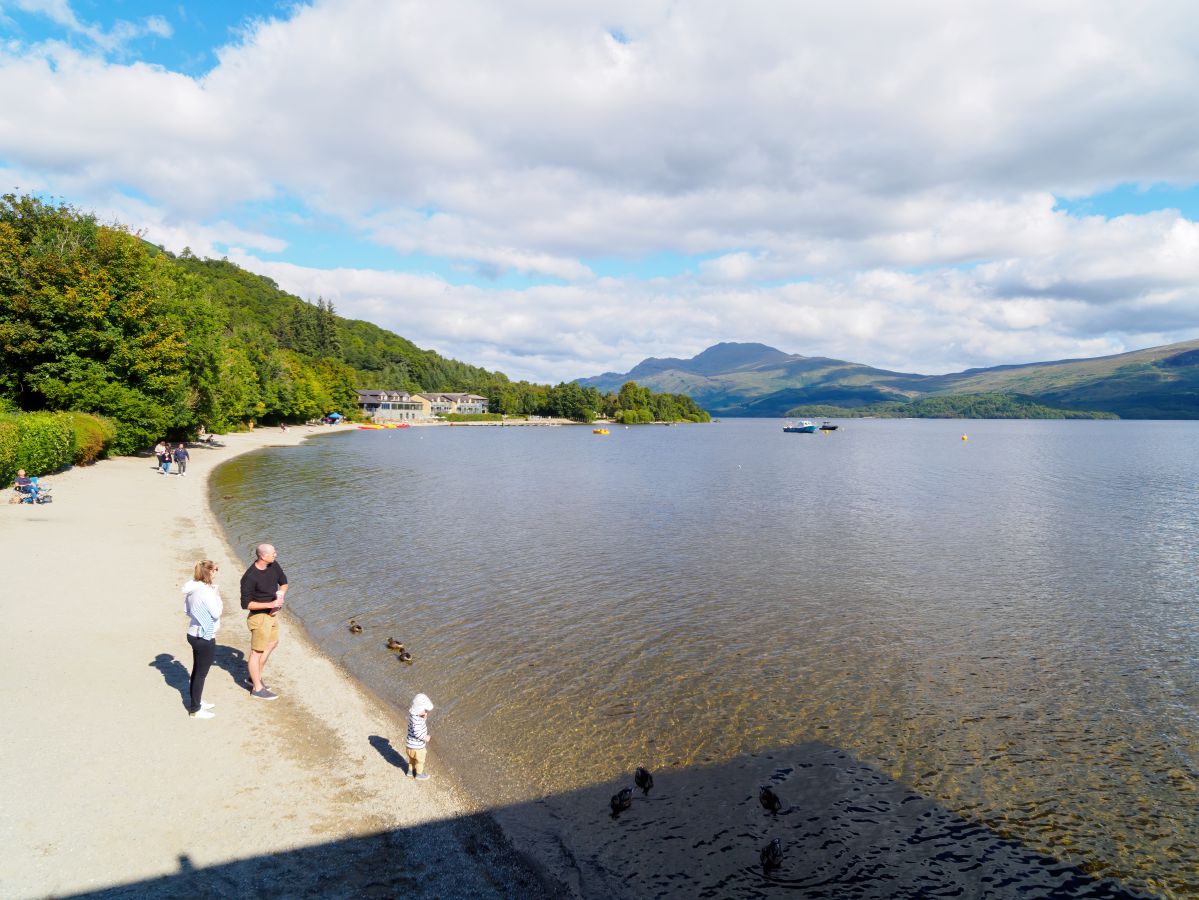
The Highlights
1: Loch Lomond is home to more attractions than any other loch in Scotland, surpassing even Loch Ness. The pick of the bunch has to be Loch Lomond Shores which is located on the southernmost end of the loch.
This leisure complex features cafes and restaurants, a sea life aquarium, a bird of prey centre, boat and watersports equipment hire, a treetop adventure course, a restored steamship, and it’s a departure point for cruises around the loch.
2: The second highlight of a visit to Loch Lomond is Luss, the impossibly pretty historic village situated midway along the loch’s west side. Luss has origins dating back over 1,000 years but is now best known for the stunning shoreside views from its attractive beachfront. Visitors to Luss will find a collection of gift shops, a pier with frequent boat cruises, and a top-notch restaurant with panoramic windows overlooking Loch Lomond.
3: The West Highland Way is one of Scotland’s best walking trails, stretching 96 miles between Milngavie and Fort William. The route passes through majestic mountain ranges and scenic glens, as well as the eastern edge of Loch Lomond and the Trossachs National Park, where it joins Balmaha and continues to the northern end at Ardleish.
Most of the terrain is well-surfaced and fairly level meaning it’s accessible to the majority of visitors. In addition, there are multiple places to take a rest break including Inversnaid and Rowardennan.
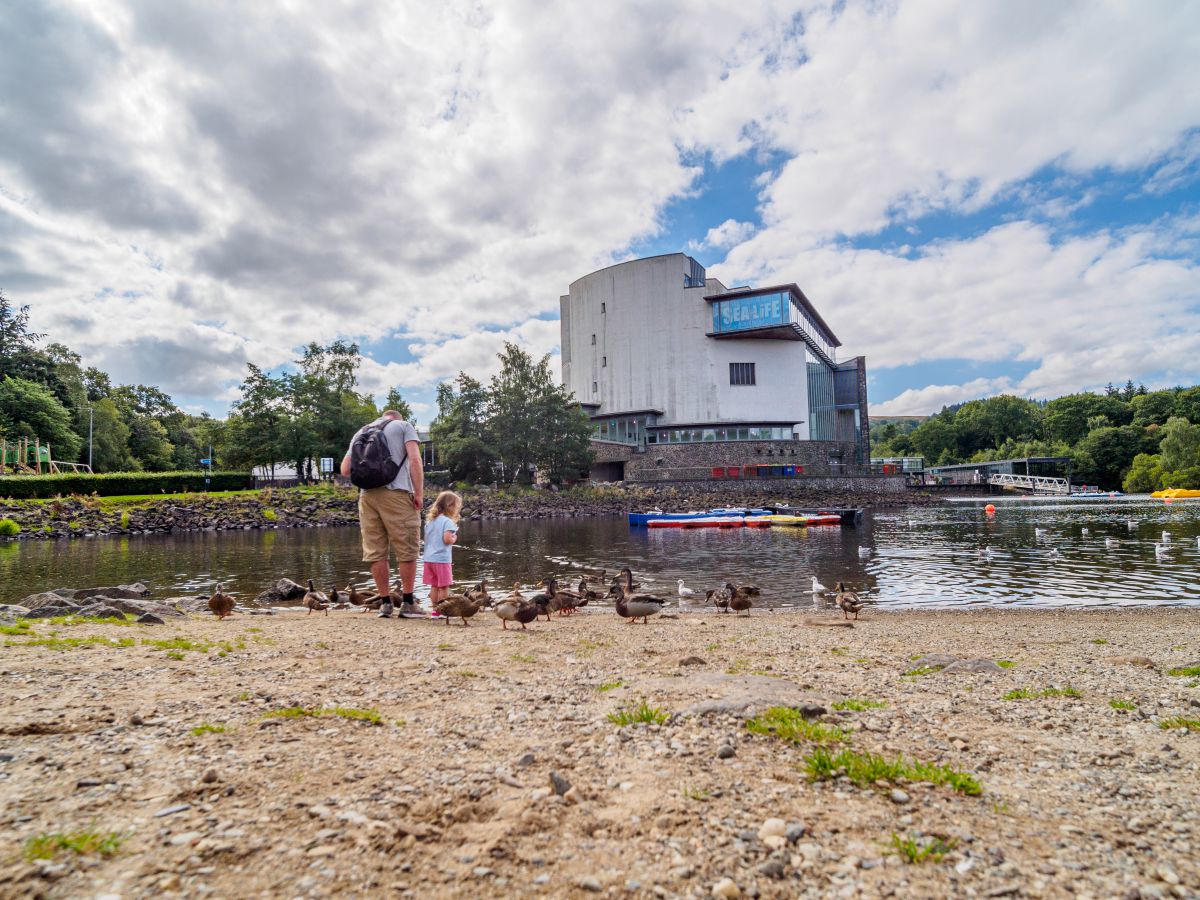
Visiting Tips
1: The best way to experience Loch Lomond is to take a cruise around it, and as you’d expect for such a major tourist attraction there are umpteen operators to choose from. One of the largest boat tour companies is Cruise Loch Lomond, which offers a number of packages with departure points at Tarbet, Luss, Inversnaid, Rowardennan, and Balmaha.
If you intend to book a cruise I thoroughly recommend the Island Explorer tour which sails around Loch Lomond’s islands before disembarking on Inchcailloch which is famous for its beautiful carpet of springtime bluebells.
2: Those visitors on a family day out will have a blast at Loch Lomond Shores. The bird of prey centre and aquarium are worth visiting on their own but there’s also the opportunity to hire a boat or visit the historic Maid of The Loch paddle steamer.
Loch Lomond Shores has the best cafes of anywhere in Loch Lomond and frequently has delicious artisan food stalls on the main terrace – a perfect spot to munch a burger while watching the waves lapping on the shoreline.
3: If you’re visiting Loch Lomond with the intention of swimming, the current advice is – don’t do it unless you’re an experienced swimmer and understand the dangers associated with swimming in open water.
The temperature of Loch Lomond is very cold even in the height of summer which means shock and muscle cramps can set in quickly. Coupled with strong currents and sudden changes in water depth, a swim in Loch Lomond can end up being fatal. If you’re intent on swimming, then the beach at Luss is probably the safest option, as the water is quite shallow near the pier.
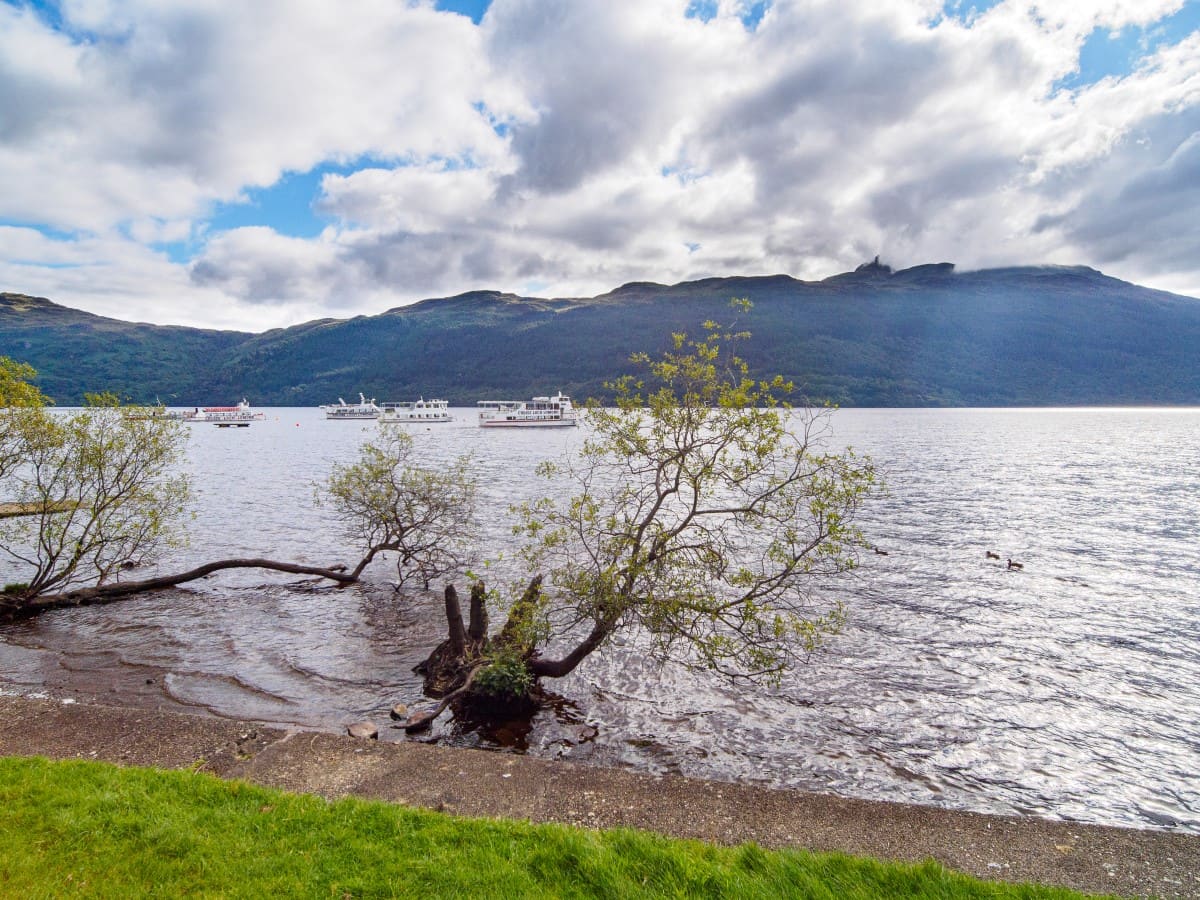
Tourist Information
There are almost too many things to do in Loch Lomond, especially for nature lovers. One of the biggest attractions in the area is its birdlife, and twitchers arrive in droves to sit on the Loch Lomond waterfront in the hope of catching sight of osprey, geese, woodpeckers, and many other species that are drawn to the vast body of water.
Pretty much anywhere is a good place for birdwatching on Loch Lomond, but one of the best locations is the RSPB reserve near Gartocharn on the A811. The combination of woodlands and wetlands at the reserve makes it a haven for birds, but it’s also a great place to catch sight of red squirrels and otters.
If wildlife watching isn’t your main interest, then you might prefer to head out onto the open water either on a tour boat or your own kayak or canoe. As far as pleasure cruises go, you have umpteen choices in virtually every village you visit, mainly because many locals still make use of the ferry services that have provided transport links between the shoreside communities since Victorian times.
If I was pushed for a preference I’d probably place Luss as the #1 place to set off for a trip around the loch purely because it’s such a scenic area, but you won’t go far wrong by departing from Tarbet, Inversnaid, Rowardennan, Balloch or Balmaha.
As mentioned earlier in this article, Cruise Loch Lomond are highly recommended but there are many other operators to choose from such as Sweeney’s Cruises and Get Knotted Cruises. With regard to booking tickets, the best option is Get Your Guide as they have links to all the top cruise companies and also offer free cancellations.
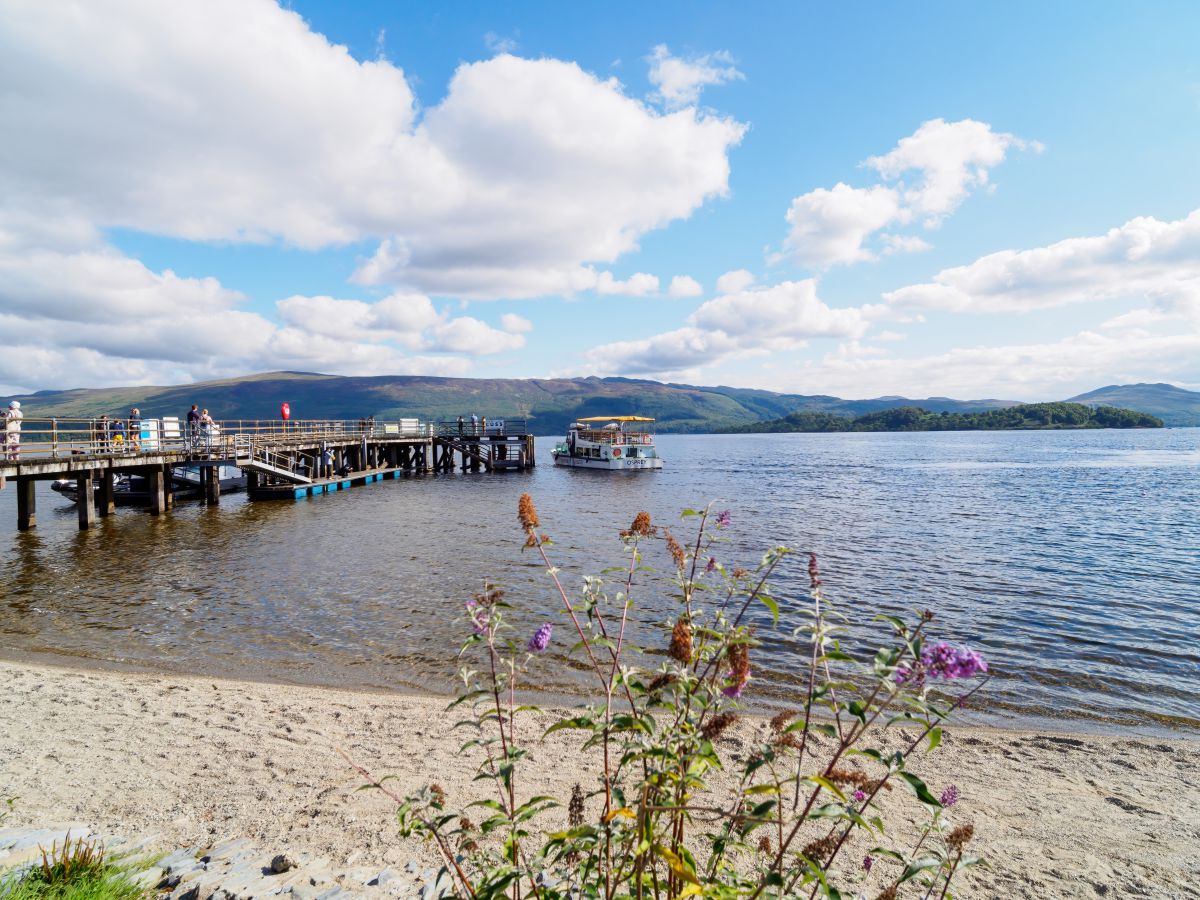
Another suggestion for cruises is the historic Maid of The Loch paddle steamer which is (as of 2024) in dry dock near Loch Lomond Shores. When this beautiful old ship is once again operational it will puff its way around the loch just as it has done for the past 70 years on regular departures from Balloch Pier. To check the status of the refurbishment, head to the official Maid of The Loch website.
Some boat tour operators have packages that sail around the islands in the middle of Loch Lomond but if you want to explore them on foot I suggest sailing out there in your own boat/kayak/canoe as you’ll have no time restrictions.
If you’re wondering which of Loch Lomond’s islands are worth paddling to I personally recommend Inchconnachan, Inchcailloch, and Inchmoan. The Countess of Arran introduced 50 wallabies to Inchconnachan in the 1940s, and they are now famous for living there.
This is the only viable group of wild wallabies outside of Australia, so many visitors make a beeline to see them, but the island is now classified as private property after being sold in 2021, so access may be restricted in the near future.
Inchcailloch Island is the main island for tour boats as there are regular sailings from Balmaha. Once on the island, you can set off on foot on three main walking routes, each of which takes around 40 minutes to complete.
The highlight of a visit to Inchcailloch is the springtime carpet of bluebells which I’m happy to confirm is exceptionally pretty, especially on a sunny day. While walking around the island, keep your eyes open for the remains of an ancient cemetery and church, and climb to the top of the hill in the centre which has stunning views.
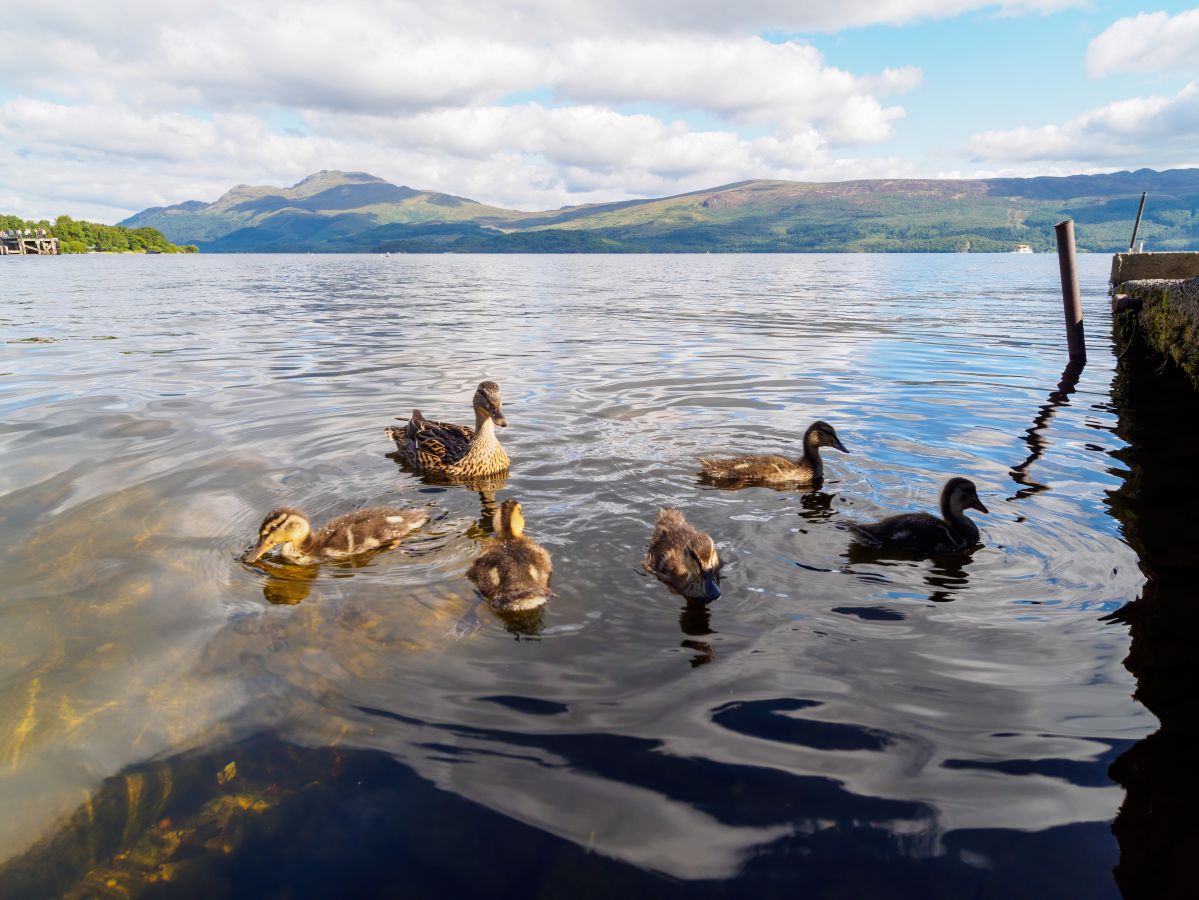
Inchmoan is by far the best island to head to for a beach day on Loch Lomond. Due to the fact that it can only be accessed by boat, it’s possible to head there and totally escape the crowds that congregate on every other stretch of sand around the loch.
The two main beaches on Inchmoan are a decent size with lovely soft and clean sand, and if you fancy a walk after sunbathing, you can walk to the northeast corner to wade across to the nearby island of Inchcruin. The only downside is that the interiors of both islands are rather boggy, so I suggest sticking to the shore as much as possible.
If golf is your preference for activities then the Loch Lomond golf club will no doubt interest you as it features an unrivalled course along with a luxury leisure club with a sauna, steam room and bubble pool. There are also sumptuous bedrooms and suites for special overnight occasions, a cinema, and a couple of very highly-rated restaurants. The prices are high, but so is the level of service.
Anyone looking for cheaper hotels in Loch Lomond will find plenty of choices on Travel Supermarket but I personally recommend the Loch Lomond Hotel in Balloch which is reasonably priced, clean, and within walking distance of the loch.
If thoughts of hotels are giving your wallet cold sweats you might consider camping at Loch Lomond or perhaps parking up a campervan for the night. One thing to bear in mind is that because the region is designated as a national park, there are certain bylaws that need to be adhered to, and virtually all camping spots require the purchase of a permit.
Details of permits and restrictions can be found on the official Loch Lomond & The Trossachs website which also includes information about the campsites in the area.
Finally, fishing on Loch Lomond is a must-do for anyone with a love of the sport, as it has a very good reputation for coarse fishing. Permits are available from most tackle shops and post offices in the area, but the Trossachs.co.uk website has a complete list of types of fish, restrictions, seasons, and places to purchase a permit.
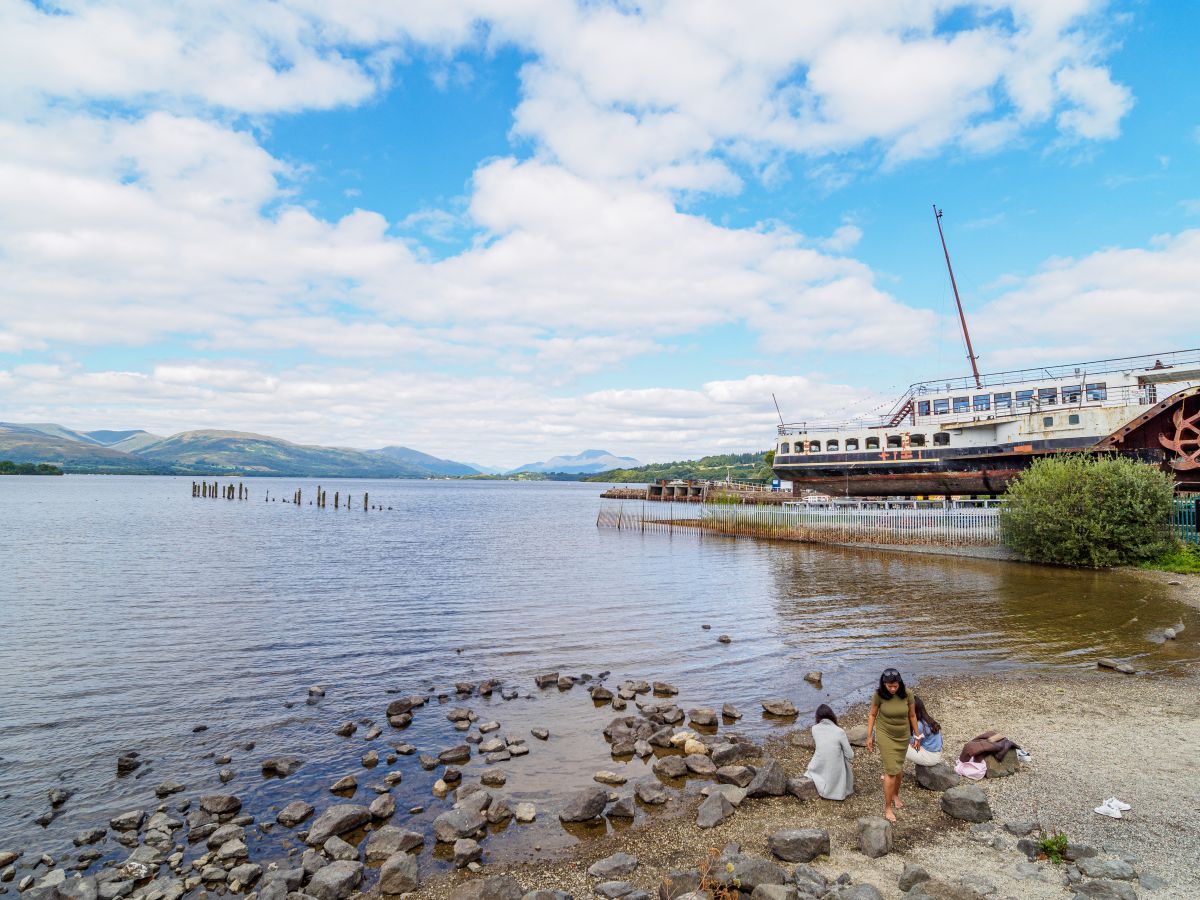
Things to Do
Join a Cruise: Embark on a cruise across Loch Lomond from one of the many departure points around the shore. Seeing the loch from the water offers tourists spectacular views of the surrounding mountains and islands while tour guides provide interesting insights into the local history and wildlife.
Hiking: The Loch Lomond and The Trossachs National Park has numerous hiking trails that are suitable for all fitness levels. The routes range from mountain climbs up Ben Lomond to relaxing strolls through villages like Luss.
Visit Inchcailloch Island: This island in Loch Lomond is a nature lover’s paradise. It’s home to a variety of wildlife and has several walking trails that run through it, allowing visitors to enjoy the spectacular swathes of bluebells that Inchcailloch is famous for.
Water Sports: From paddleboarding to windsurfing, Loch Lomond offers a range of water sports. The loch’s calm waters make it an ideal spot for beginners and experienced watersports enthusiasts alike. Note that swimming should only be attempted at locations where it is designated as being safe.
Bird Watching: Loch Lomond is a haven for bird watchers. With a variety of species including ospreys, sea eagles, and kingfishers, you’ll be spoilt for choice. Just remember to take binoculars with you (link to binocular reviews).
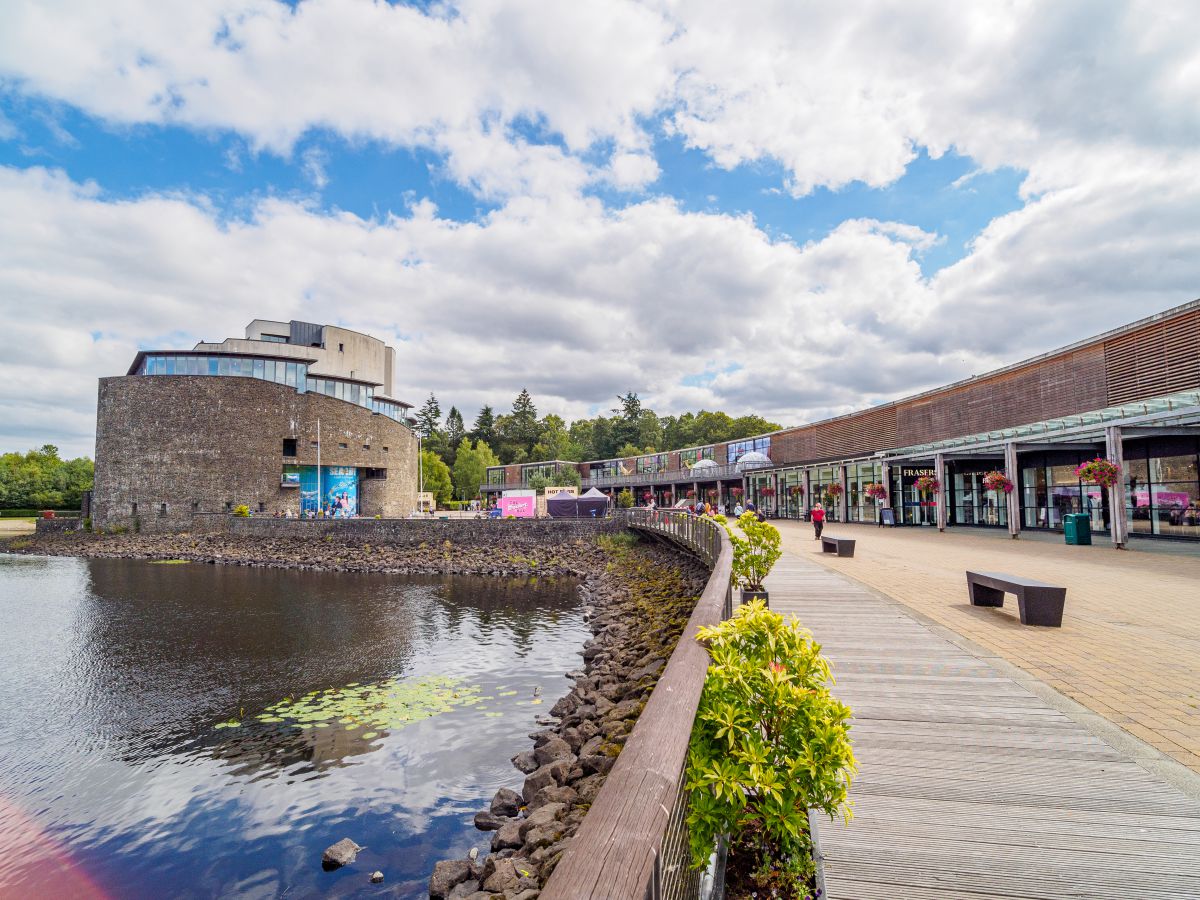
Things to Do Nearby
Balloch Castle Country Park. Address: Balloch G83 8LX.
This country park is situated to the immediate east of Loch Lomond Shores, though as it’s on the opposite side of the River Leven it requires a 1-mile walk or a 2-mile drive to get there. Once at the park, visitors can enjoy a network of paths that circle woodland and landscaped grounds, as well as a couple of small beaches, a play park, and a walled garden.
Luss. Address: Alexandria G83 8PA.
Luss is one of the prettiest villages in Scotland and is famous for the views of Loch Lomond behind the row of quaint cottages that line Pier Road in the village’s centre. Highlights of a visit to Luss include seeing the ancient church, which has a 1,500-year history, sitting on the golden sand beach next to the pier, and joining one of the frequent boat cruises that sail around the loch.
Loch Lomond Shores. Address: Alexandria G83 8QP.
As mentioned previously in this visitor guide, Loch Lomond Shores is one of – if not the – best visitor destinations anywhere on Loch Lomond. Highlights include the superb sea life aquarium and the bird of prey centre, both of which are among the top tourist attractions in Sachs National Park. In addition, there are multiple eateries as well as boat rental facilities and the historic Maid of the Loch paddle steamer.
Balmaha. Address: Glasgow G63 0JQ.
Balmaha is a small village on the eastern shore of Loch Lomond that features a large car park with a visitor centre, a pier with regular sailings to Inchcailloch island, and paths that follow a meandering course up nearby Conic Hill, which has fabulous views of the Trossachs from the summit.
Tarbet. Address: Arrochar G83 7DG.
Tarbet is a small village on the west shore of Loch Lomond that is one of the most popular departure points for boat cruises. In addition to its use for boat tours, Tarbet is a popular place for walks into the Trossachs National Park as it links to the Cowal Way and the Three Lochs Way.
Frequently Asked Questions
Can you swim in Loch Lomond?
It is possible to swim in Loch Lomond, though safety guidelines must be adhered to as there have been fatalities in recent years due to inexperienced swimmers getting into difficulties in the loch.
Loch Lomond has a maximum summer average temperature of around 20°C near the surface, but strong winds can quickly cause cold water from the depths to replace warm water at the surface, leading to chills and muscle cramps.
When swimming in Loch Lomond follow these guidelines: Avoid boating areas, wear easily identifiable swimwear, use a swim safety device (Amazon link), swim with at least one other person, and check the weather forecast before heading out.
Which part of Loch Lomond is best?
There are several visitor favourites on Loch Lomond including Luss (west side), Balmaha (east side) and Balloch (south side).
Of these villages, Balloch offers the most attractions and activities while Balmaha and Luss are considered the most scenic. Balmaha, in particular, is a great destination for visitors to explore the landscape as it’s close to paths leading into the Trossachs National Park and onto the West Highland Way.
Which is bigger Loch Ness or Loch Lomond?
Loch Lomond is Scotland’s largest loch by surface area at 71 square km. It has a total volume of 2.6 cubic km.
Loch Ness is Scotland’s largest loch by volume at 7.4 cubic km. It has a surface area of 56.4 square km.
How was Loch Lomond formed?
Like most of Scotland’s lochs, Loch Lomond was formed by the movement of glaciers during the last ice age, 10–20,000 years ago.
North of the Highland Boundary Fault, glaciers carved a deep fissure into the hard rock, resulting in the narrow northern section.
The soft rocks south of the Highland Boundary Fault allowed glaciers to spread out, hence the reason why the southern end of Loch Lomond is much wider.

